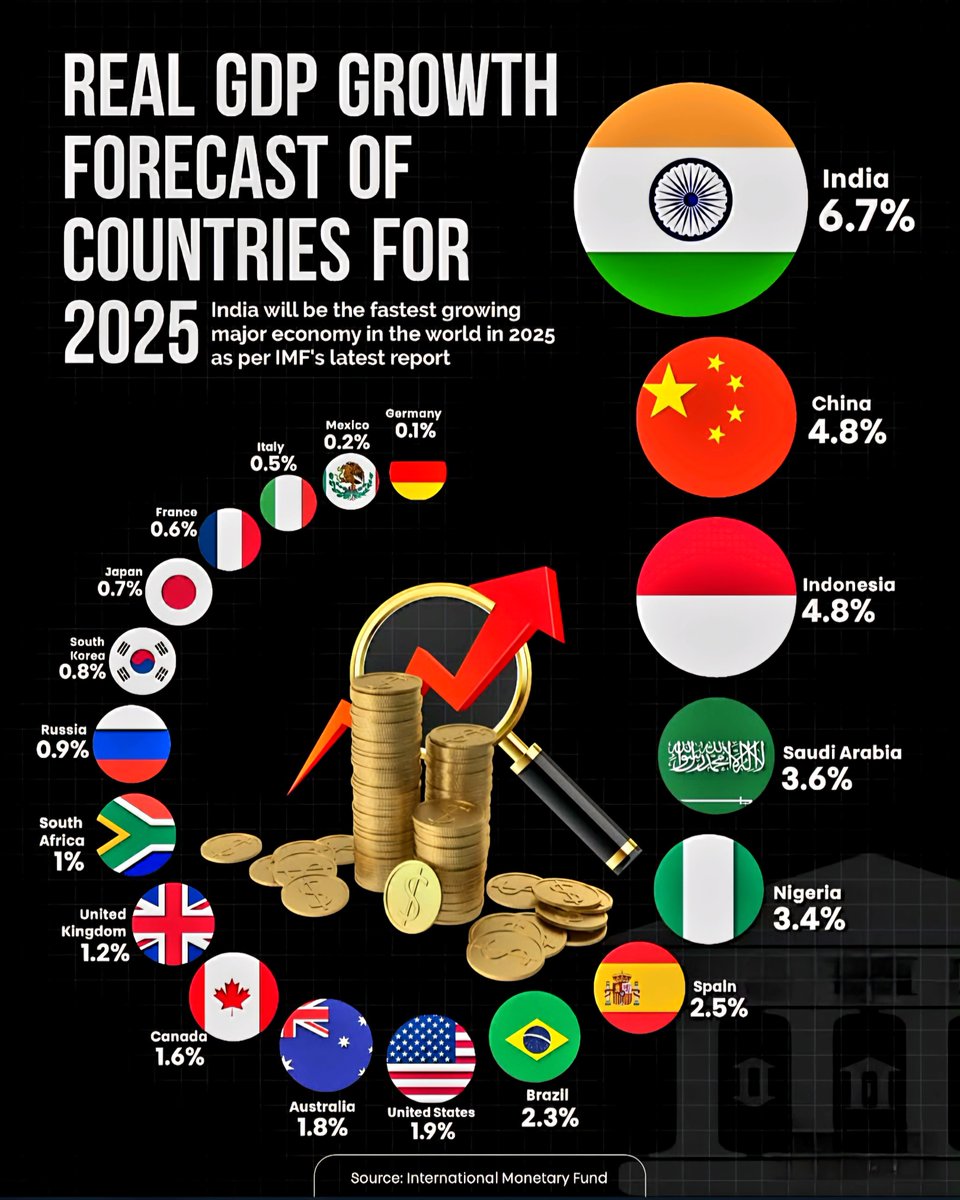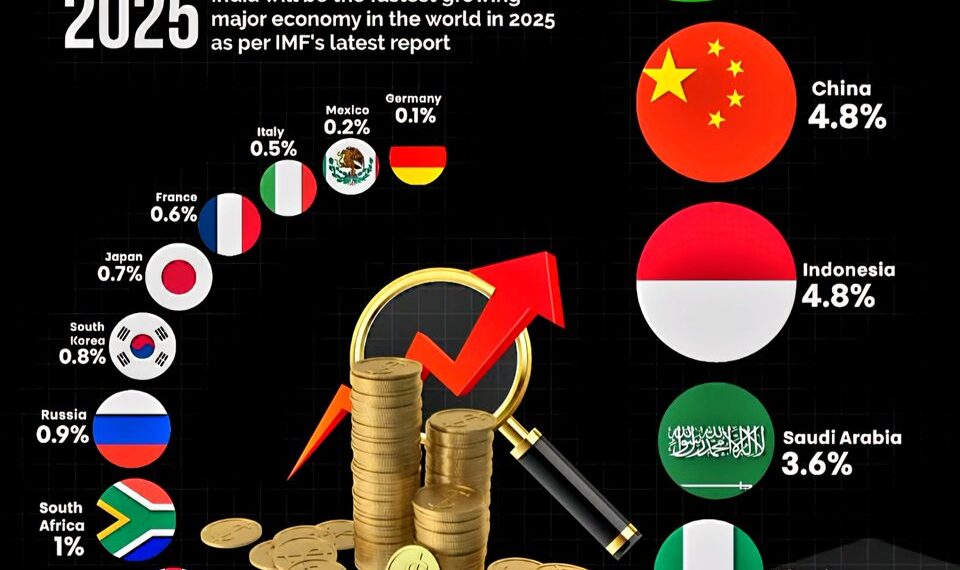Select Language:

Top Countries Projected to Lead Global Economic Growth in 2025
1. India: The World’s Fastest Growing Major Economy
India is set to dominate economic growth in 2025 with a projected GDP growth rate of 6.7%. According to the latest International Monetary Fund (IMF) report, the South Asian nation continues its impressive upward trajectory fueled by robust domestic consumption, a dynamic technology sector, and significant reforms aimed at improving infrastructure and ease of doing business. This growth positions India as a key player on the global economic stage, potentially reshaping trade patterns and investment flows in the coming years.
2. China and Indonesia: Major Economies on the Rise
China, traditionally a global economic powerhouse, is expected to grow by 4.8% in 2025. Although its pace has slowed compared to earlier decades, it remains a vital contributor to worldwide growth, driven by continued advancements in manufacturing, export expansion, and digital innovation.
Indonesia matches China’s growth rate at 4.8%, highlighting Southeast Asia’s rising economic influence. Driven by an expanding middle class, infrastructure development, and increased foreign investment, Indonesia is increasingly seen as a key player in geopolitics and economics in the Asia-Pacific region.
3. Saudi Arabia and Nigeria: Emerging Market Leaders
Saudi Arabia’s economy is forecasted to grow at 3.6%, supported by its Vision 2030 initiative aimed at diversifying away from oil dependency. Investments in tourism, entertainment, and renewable energy are expected to boost overall economic performance.
Nigeria, with an anticipated growth rate of 3.4%, is Africa’s largest economy. It benefits from a youthful population, expanding tech industry, and ongoing reforms to improve business climate, despite challenges like infrastructure deficits and political stability.
4. European and Latin American Economies: Steady but Modest Growth
Spain is projected to see a 2.5% growth rate, thanks to tourism recovery, innovation in technology sectors, and a rebound in manufacturing.
Brazil follows with 2.3%, driven by commodity exports, agricultural expansion, and recent political stabilization efforts. These factors are set to bolster Latin America’s largest economy amid global uncertainties.
5. The United States and Australia: Navigating Post-Pandemic Recovery
The United States, with a forecasted growth of 1.9%, continues its path of recovery and resilience. Strong consumer spending, technological advancement, and infrastructure investments contribute to this moderate expansion.
Australia’s economy is expected to grow by 1.8%, supported by a record-breaking mining sector, increased investment in renewable energy, and sustained demand from China.
6. Canada and the United Kingdom: Stable but Slower Growth
Canada is projected to grow by 1.6%, with its resource-rich economy benefitting from global commodity demand. The country also focuses on innovation and clean energy sectors.
The UK’s economy is forecast at 1.2%, as it continues to adapt post-Brexit through trade agreements and shifts in financial and creative industries.
7. Africa and Russia: Modest Expansion Amid Challenges
South Africa’s 1% growth reflects ongoing structural reforms and efforts to enhance investment climate, though political and social issues remain hurdles.
Russia is expected to grow just under 1% at 0.9%, influenced by geopolitical sanctions, fluctuating oil prices, and recent economic reforms.
8. East Asian Giants and Europe: Slow but Steady
South Korea and Japan are forecasted at 0.8% and 0.7% respectively, as aging populations and technological transformations shape their economies.
France, Italy, and Germany are experiencing minimal yet resilient growth margins, at 0.6%, 0.5%, and 0.1%, supported by innovations in green energy and manufacturing.
9. Mexico and Germany: Smaller but Significant Numbers
Mexico’s economy is predicted to grow modestly at 0.2%, primarily driven by manufacturing exports and digital transformation initiatives.
Germany, Europe’s largest economy, is expected to stagnate with a growth rate of just 0.1%, challenged by demographic shifts and global supply chain pressures.
Key Takeaways
The global economic landscape in 2025 will be marked by rapid growth in emerging markets, notably India and Indonesia, while established economies like the U.S. and Europe experience steadier, slower expansion. These projections highlight shifting power dynamics and investment opportunities worldwide as nations navigate post-pandemic recovery and geopolitical developments.
Source: IMF (International Monetary Fund), 2025






